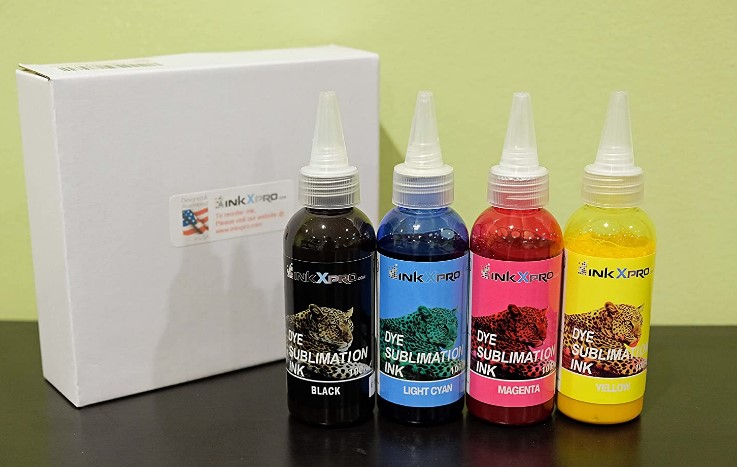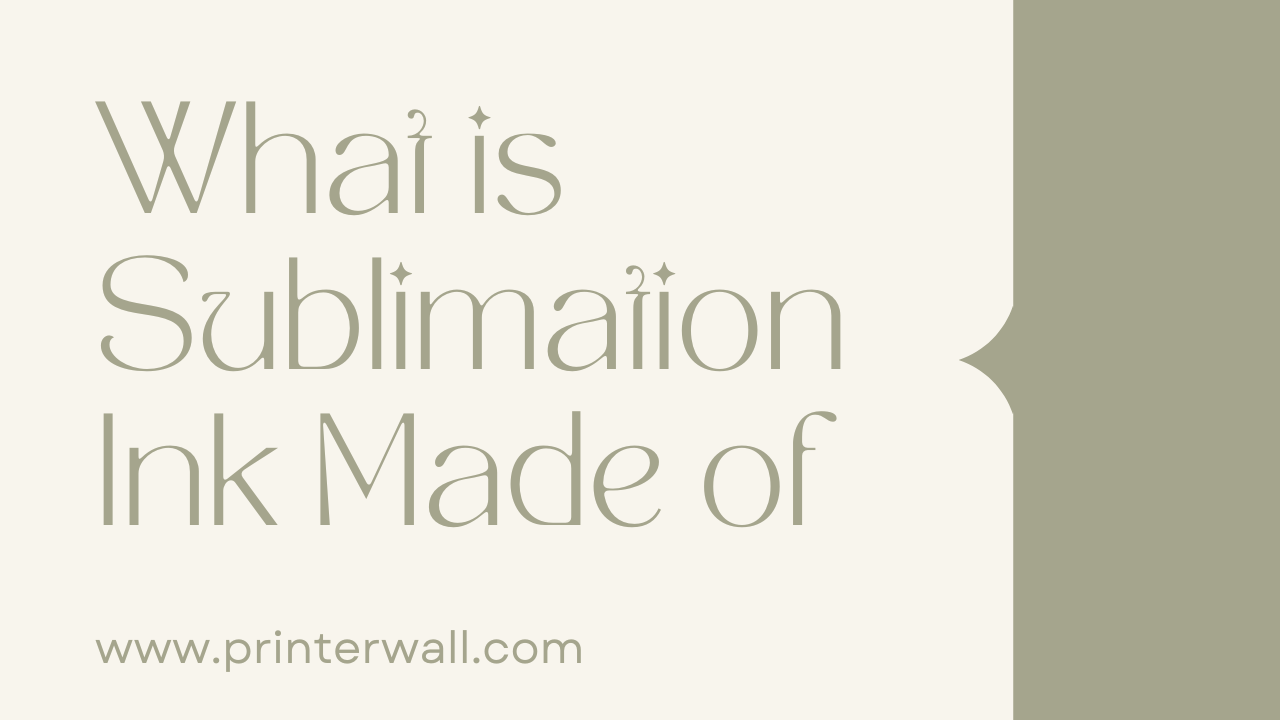Sublimation ink is a revolutionary new form of ink used in many different types of printing. This new type of ink has many advantages over traditional printing inks, such as being easier to use, producing more vibrant colors, and being more cost effective. In this article, we will explore what sublimation ink is made of, the advantages of using it, and how it can be used in various printing applications.
Sublimation Ink Made of
Sublimation ink is an ink specifically designed for use in dye sublimation printing. It is made from a combination of three components: a dye, a carrier fluid, and a substrate. The dye is the component responsible for producing the image on the printed material. It is usually a type of disperse dye, a variety of synthetic dye that is used for printing fabrics and other porous materials.

The carrier fluid is responsible for transporting the dye onto the substrate. It is typically composed of a mixture of glycols, alcohols, and other solvents. Finally, the substrate is the material that the ink is printed onto. It could be a fabric, paper, or other porous material.
The components of the sublimation ink interact in a specific process. First, the carrier fluid evaporates, leaving the dye suspended in the air. The dye particles then become airborne and, when heated, transform into a gas. This gas adheres to the substrate and then reverts back to a solid state, forming the image. The substrate absorbs the dye, allowing it to become part of the material. The result is a vibrant, high-quality image that is resistant to fading and other damage.
Benefits of Sublimation Ink
Quality of the prints
Sublimation ink is a popular choice for digital printing due to the high-quality prints it produces. The ink is designed to be resistant to fading and smudging, which means that the prints will last for a very long time. The colors are also sharper and more vivid, making the prints more attractive.
Cost-effectiveness
Sublimation ink is very cost-effective compared to other types of inks. Since it is dye-based, there is no need to purchase additional cartridges or ink refills, which can save money in the long run. Additionally, since the prints are of such high quality, there is no need to invest in expensive printing equipment or media.
Color vibrancy
Sublimation ink is known for its vibrant colors, which is what makes it so popular among digital printing enthusiasts. The colors are more vivid and vibrant than those produced by other types of inks, making the prints even more attractive. Additionally, the colors will remain consistent for a long time, even when exposed to sunlight or other environmental conditions.
Conclusion
Sublimation ink is a versatile and cost-effective printing solution for many applications. It is made from a combination of wax, resin, and dye components that are heated and pressed onto a variety of materials. This process results in an image that is highly resistant to fading, smudging, and peeling. Sublimation ink is a great option for those looking for a reliable and efficient printing solution. Its ability to produce vibrant, long-lasting images makes it a preferred choice for many businesses and consumers alike.
Also Read: What is Dye Sublimation Ink
Frequently Asked Questions
What is sublimation ink made of?
Sublimation ink is a type of ink that is made up of dyes that are specially formulated for use in digital printing. It is composed of a combination of pigments, solvents, and other components.
How does sublimation ink work?
Sublimation ink works by using heat to transfer the dye into the fabric or material that is being printed on. The dye is then absorbed by the fabric, resulting in a vivid and permanent image.
Is sublimation ink safe to use?
Yes, sublimation ink is safe to use. It is non-toxic and does not contain any hazardous chemicals.
What types of materials can I use sublimation ink on?
Sublimation ink can be used on a variety of materials, including polyester fabrics, ceramic tiles, metals, and hard plastics.
Can sublimation ink be used on cotton fabrics?
No, sublimation ink cannot be used on cotton fabrics as it does not absorb into the fabric. The dye will not be able to adhere to the material.
